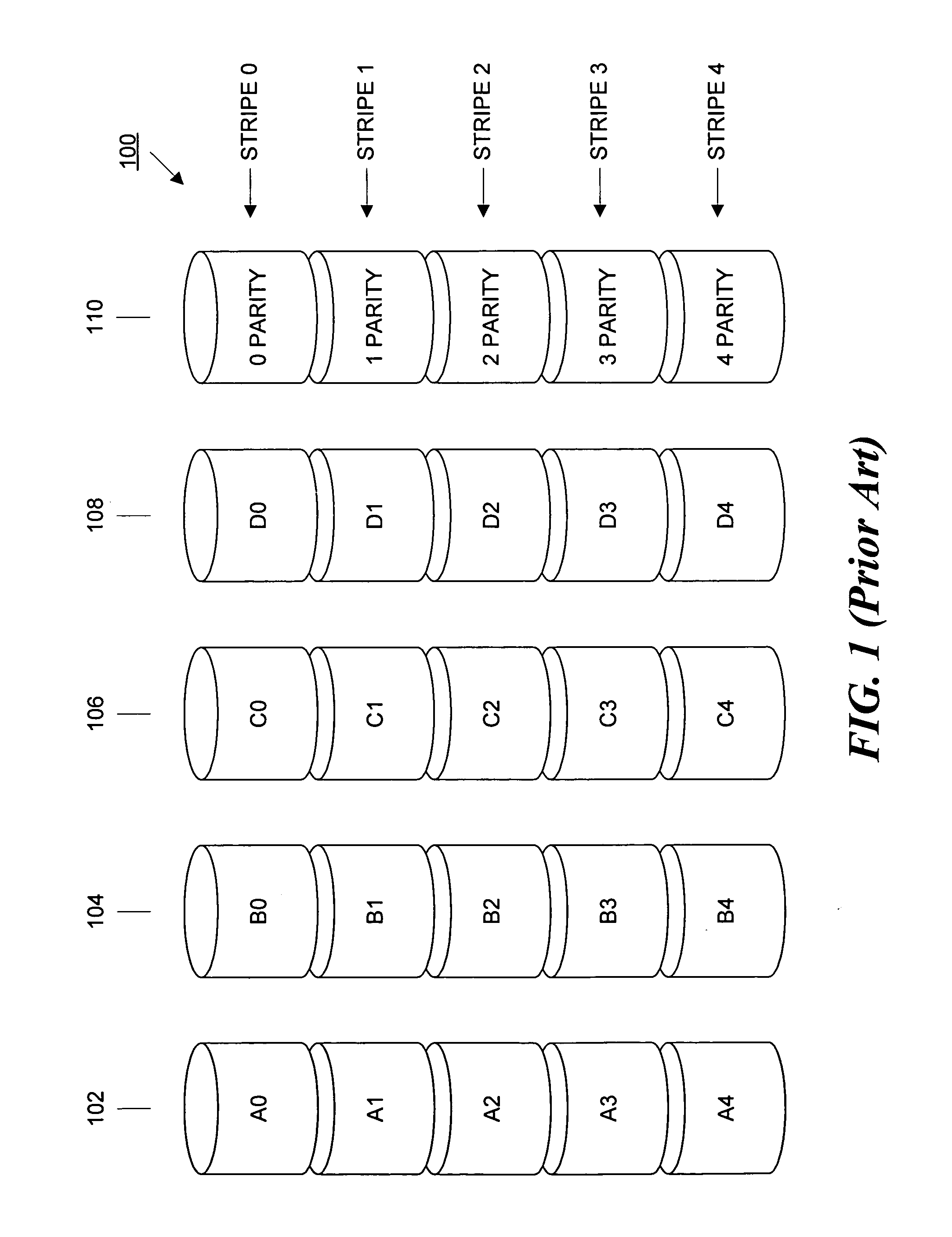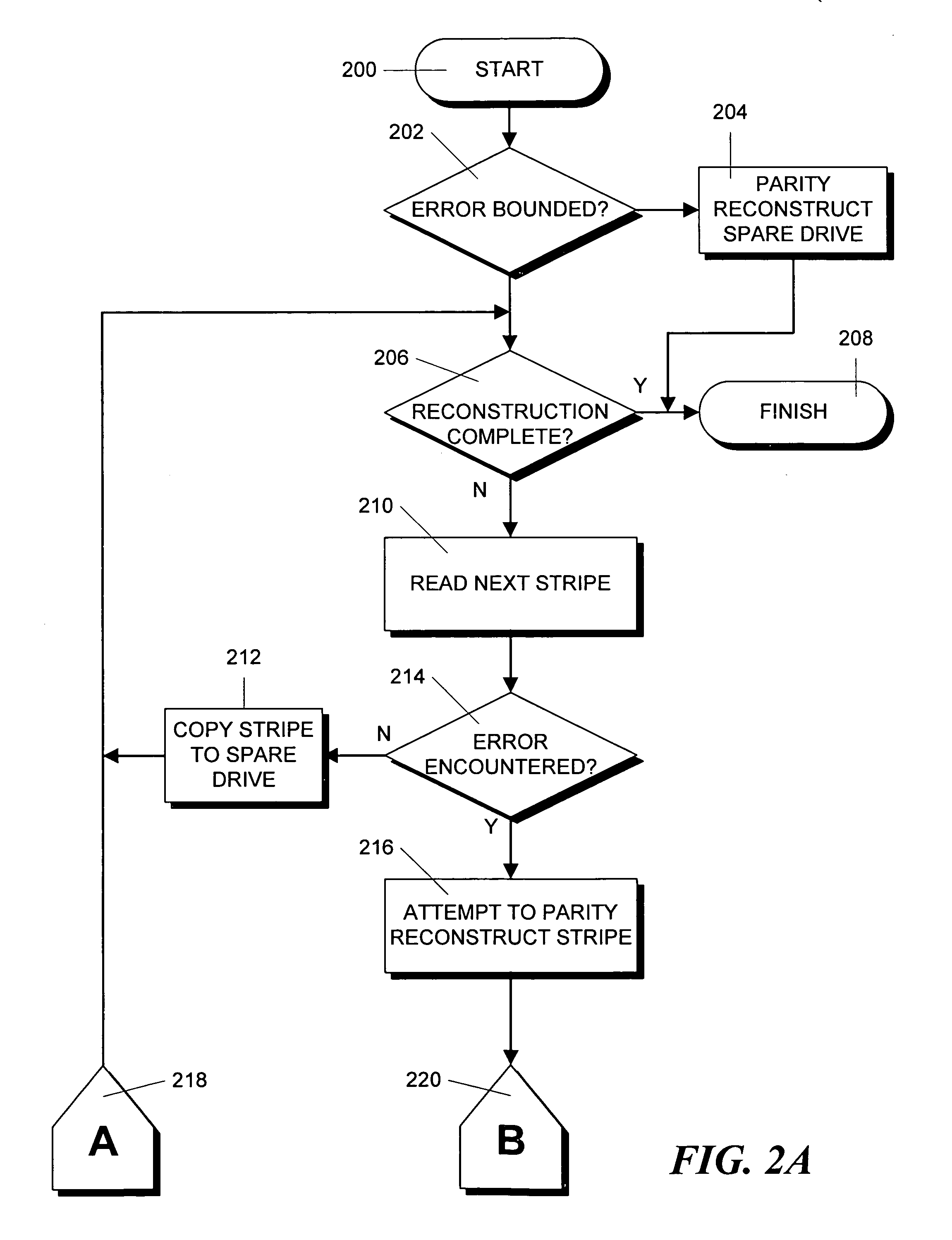Method and apparatus for decreasing failed disk reconstruction time in a raid data storage system
a data storage system and failed disk technology, applied in the field of data storage systems, can solve the problems of raid volume data at risk, time increase, and long reconstruction process, and achieve the effect of reducing the time of failed disk reconstruction in the raid storage system
- Summary
- Abstract
- Description
- Claims
- Application Information
AI Technical Summary
Benefits of technology
Problems solved by technology
Method used
Image
Examples
Embodiment Construction
[0021] In most prior art reconstruction schemes, a failed drive is taken offline, and only the surviving secondary drives are employed to create an image to be installed on the spare drive, which is then promoted. However, we have found that a significant portion, if not a majority, of disk drive failures are localized to a limited number of data blocks on magnetic media and, for example, may be due to particulate contamination, bit rot or other non-catastrophic types of failures.
[0022] If the failed drive is used as a source for at least some of the data to be written to the spare drive, for the data copied from the failed drive, the overhead associated with reading from the N surviving drives to create the data for the spare drive can be reduced to the overhead required to read from a single drive. For example, in the RAID 5 case described above, the theoretical maximum reconstruction bandwidth improves from two gigabits per second divided by N+1 to two gigabits per second divide...
PUM
 Login to View More
Login to View More Abstract
Description
Claims
Application Information
 Login to View More
Login to View More - R&D
- Intellectual Property
- Life Sciences
- Materials
- Tech Scout
- Unparalleled Data Quality
- Higher Quality Content
- 60% Fewer Hallucinations
Browse by: Latest US Patents, China's latest patents, Technical Efficacy Thesaurus, Application Domain, Technology Topic, Popular Technical Reports.
© 2025 PatSnap. All rights reserved.Legal|Privacy policy|Modern Slavery Act Transparency Statement|Sitemap|About US| Contact US: help@patsnap.com



